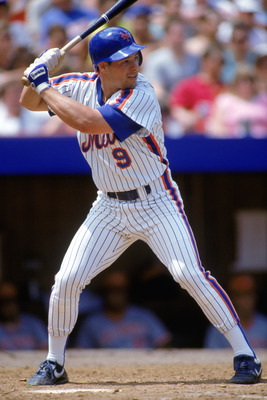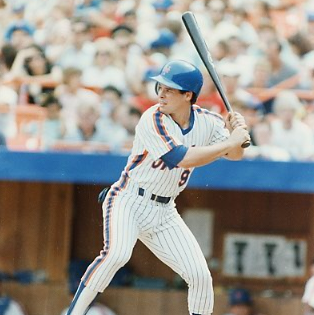If Shakespeare were to write a play about the state of the Mets these days, it would probably be titled “Much Ado About Valdespin” as that’s about all anyone has to talk about outside of the largely dismal performance of the team between the lines. Inasmuch as the role young number 1 plays on the team is largely limited to that of utility player/pinch hitter, I wonder if the fuss being kicked up over his various perceived misbehaviors is not out of proportion to the relative importance he has to the team. Not that he is without talent-we all are tantalized by his speed, occasional power, and penchant for heroics, but the holes in his game are gaping enough to justify only judicious use of his presence in the lineup. Add in to this equation the somewhat larger-than-life aspects of his personality and you have a recipe for clubhouse controversy as testified to by the recent statement by seasoned veteran LaTroy Hawkins.
 So, just how important is the ingredient of clubhouse chemistry to the relative success of a team? My feeling is that the degree of significance is in opposite proportion to the on-field success of the player involved. One former Met whose flinty personality rubbed people the wrong way everywhere he played was Jeff Kent, yet his undeniable offensive prowess (in more ways than one, I guess) led to a HOF-caliber career which included several seasons in the same lineup as Barry Bonds, no paragon of social niceties himself. In retrospect, the Mets trade of Kent for Carlos Baerga was a total clunker as Kent’s level of production exploded to All-Star level just as Baerga’s went into the tank. But at the time, Baerga was an All-Star who was younger than Kent and who carried none of the baggage associated with Kent, whose primary offense in a Met uniform was refusing to participate in a rookie ritual that involved wearing a ridiculous outfit for a team trip.
So, just how important is the ingredient of clubhouse chemistry to the relative success of a team? My feeling is that the degree of significance is in opposite proportion to the on-field success of the player involved. One former Met whose flinty personality rubbed people the wrong way everywhere he played was Jeff Kent, yet his undeniable offensive prowess (in more ways than one, I guess) led to a HOF-caliber career which included several seasons in the same lineup as Barry Bonds, no paragon of social niceties himself. In retrospect, the Mets trade of Kent for Carlos Baerga was a total clunker as Kent’s level of production exploded to All-Star level just as Baerga’s went into the tank. But at the time, Baerga was an All-Star who was younger than Kent and who carried none of the baggage associated with Kent, whose primary offense in a Met uniform was refusing to participate in a rookie ritual that involved wearing a ridiculous outfit for a team trip.
Team management saw the opportunity to swap a player they saw as having a somewhat negative effect on team harmony for a proven performer and they went for it. History has shown this to be one in a litany of bad trades that Met fans would just as soon forget, but you can’t argue with the logic at the time. Add to this the fact that Indians management saw nothing wrong with spinning Kent off in the trade that landed him in San Francisco (where stardom followed) and you can’t really jump on poor Joe McIvaine’s case too hard. Once in Giant livery, Kent reeled off a string of tremendous seasons that culminated in arguably one of the greatest careers of any second baseman in MLB history. But he was still regarded as a major-league prick. I guess most teams would have put up with that aspect of his game as long as the rest of it was intact.
Another interesting chapter in the DSM of Metdom involved one Randall K. Myers and wunderkind batsman Gregg Jefferies. Jefferies, as you undoubtedly recall, was perhaps the most heralded Mets hitting prospect ever outside of Darryl Strawberry. Fans were regaled with tales of his incredible switch-hitting talents, honed through a variety of batting drills such as the semi-weird “swinging underwater in a pool” routine that the sports press of the time delighted in recounting. Upon his arrival, young Gregg looked to be the real thing, ripping off an impressive month at the end of the 1988 season and challenging the team to find a way to fit him into the same infield as Howard Johnson, the incumbent at Jefferies preferred position of third base.
 After shifting the rookie across the diamond to second, the team received satisfactory offensive performance from him over the next two seasons, including a league leading 40 doubles in 1990. But prior to that campaign, the team had seen fit to trade Myers, a fireballing lefty reliever, to the Reds for his veteran counterpart and future Mets Hall-of-Famer John Franco. Not a terrible swap in retrospect, but at the time many wondered why the Mets would exchange a talent of Myers’ ilk for a player two years older who relied primarily on a deceptive change-up as an out pitch. The role of closer was one that most felt was better served by the blazer of young Randall K., and so inquiries as to the motivation of management with respect to the trade were made.
After shifting the rookie across the diamond to second, the team received satisfactory offensive performance from him over the next two seasons, including a league leading 40 doubles in 1990. But prior to that campaign, the team had seen fit to trade Myers, a fireballing lefty reliever, to the Reds for his veteran counterpart and future Mets Hall-of-Famer John Franco. Not a terrible swap in retrospect, but at the time many wondered why the Mets would exchange a talent of Myers’ ilk for a player two years older who relied primarily on a deceptive change-up as an out pitch. The role of closer was one that most felt was better served by the blazer of young Randall K., and so inquiries as to the motivation of management with respect to the trade were made.
Revelations were forthcoming to the effect that the clubhouse friction between Myers and Jefferies was such that it was deemed best for all concerned to “keep ‘em separated,” to borrow a song lyric. Jefferies had been noted as being especially fussy about his bats and other equipment, and had garnered a reputation as a bit of a prima donna due to his helmet flinging episodes following strikeouts. Following reports that Myers had conspired with fellow bullpen denizen Roger McDowell to saw several of Jefferies bats in half and perhaps bring the youngster down a peg or two, it was made clear that the front office preferred to remove elements of controversy from the clubhouse. The element chosen was the self-styled cowabunga warrior Myers, a change that management hoped would help the more sensitive Jefferies flourish. He did, ultimately, making the All-Star team and challenging for a batting title in 1993-for the St. Louis Cardinals. Prior to that, he had been part of the trade package put together to bring Bret Saberhagen to New York after his various peccadilloes had become less bearable in light of his merely competent level of production.
Another notorious bête noire of Met clubhouse history was former first-rounder Lastings Milledge whose escapades are still relatively fresh in the mind of the average Met fan. Now consigned to showing up opponents and teammates in Japan, the young Mr. Milledge arrived in 2006 with a reputation for trouble already established but with his talent still largely a promise of things to come. After two seasons in the Orange and Blue, he was sent packing to Washington for Ryan Church and Brian Schneider, worthy enough role players but lacking any star power of the type hinted at by some aspects of Milledge’s game. When his potential for stardom failed to materialize after that, he drifted to Pittsburgh, then on to the south side of Chicago before opting for the Far East. Still only 28, he may have finally found himself as a player with the Tokyo Yakult Swallows. One can only hope that he has overcome the habits that lead to the posting of the infamous “Know Your Place, Rook” sign in his locker by Met teammate Billy Wagner.
A more unusual aspect of the “player as clubhouse distraction” syndrome was noted during the 2004 and 2005 seasons when Anna Benson, the wife of the contrastingly low-key Met pitcher Kris Benson, arrived on the scene. The combination of Mrs. Benson’s startlingly frank pronouncements on virtually everything with behavior such as appearing as a va-va-voom version of “Mrs. Claus” at the Met annual Christmas charity function combined to lead to a trade with Baltimore sending her husband out of town after a season and a half. That the male Benson’s apparent talent level was that of an eminently replaceable back-of-rotation starter probably contributed to his exit as well. Had he displayed more in the way of dominant pitching skills, the team’s tolerance for the more “colorful” aspects of his spouse’s persona might have been greater.
So, what of the Mets’ current bad boy? I expect that as long as whatever contributions he makes on the field outweigh the perceived negative effect of his extra-curricular antics, he will stick around. At this point, the team hasn’t done a lot to enhance his trade value anyway. Considering the organization’s history though, I imagine that if circumstances conspire to raise his baseball value in the estimation of any general manager not named Alderson, he could be on his way somewhere in the relatively near future. Maybe someone will be enticed to take him for a “’Spin?”















